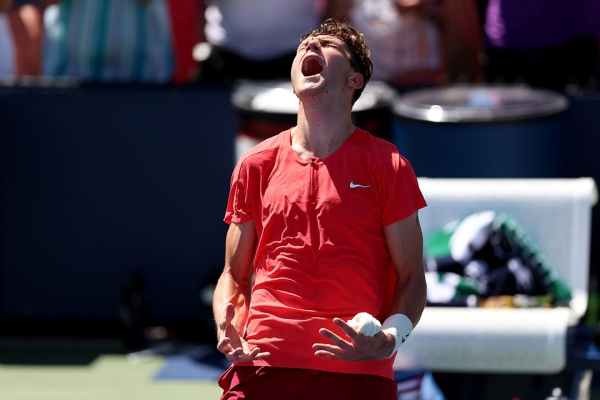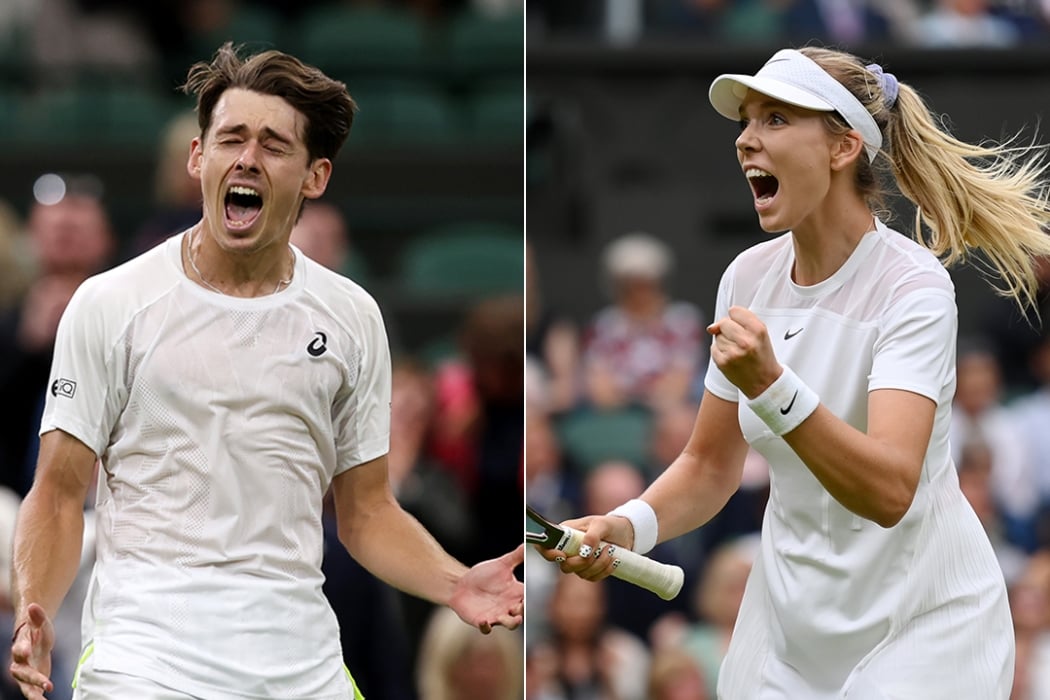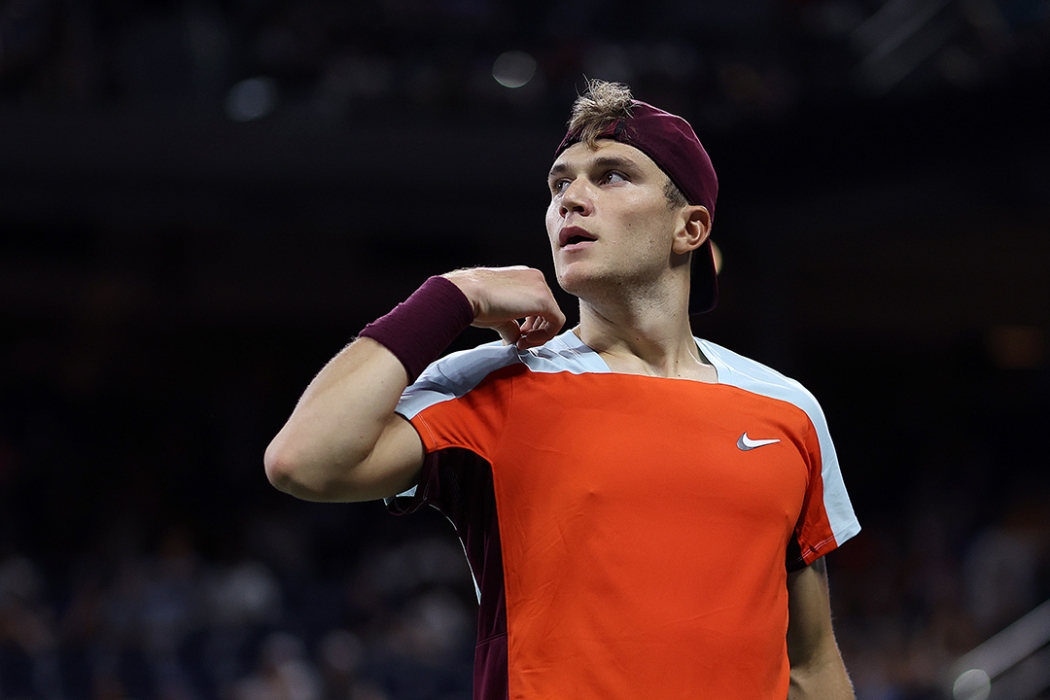For two players whose injuries have interrupted promising careers, the US Open has had more anxious moments for Jack Draper and Katie Boulter.
On Thursday in her doubles match, Boulter sported strapping on her shoulder, while Draper’s participation in the year’s final Slam was questionable when scans revealed a small tear in his arm, sustained in Winston-Salem.
Yet neither issue has been enough to derail their progress, and both Brits have reached the third round at Flushing Meadows.
They join compatriots Cam Norrie and Dan Evans in the last 32 in what is becoming a memorable tournament for the Union Jack.
Boulter’s strapping – apparently precautionary – was spotted in her doubles match on Thursday, after she beat in-form Chinese player Wang Yafan 5-7 6-1 6-4 in singles.
The result sends Boulter through to the third round of a Grand Slam tournament for the first time outside her home country, and puts her on the brink of a top-50 debut.
“It's a huge stage and it's a huge moment for me,” said Boulter, who also reached the third round at Wimbledon in 2022 and 2023.
EXPERT PICKS: Who win the US Open in 2023?
RELATED: Gauff and Pegula coming for Big Three at US Open
“(This win is) definitely up there. I don't think anything beats playing a third round at Wimbledon because it's my favourite slam of all, but it comes pretty close, I can assure you of that.
“I managed to overcome all those things (wind, sun and serving challenges) and win the match, and that's ultimately what tennis is, finding a way to win. I'm very proud of myself for that today.
“It has been a massive goal of mine to be inside top 50. I have always believed that I could be there.”
Steady gains
For much of 2023, Boulter has indeed been performing like a top-50 player.
Two ITF 60K titles earlier in the season were followed by her first WTA tournament win in Nottingham, helping her build an impressive win-loss record of 35-16.
In less than six months, the 27-year-old will have improved her ranking by more than 100 places, especially heartening considering the physical hurdles she has cleared.
A stress fracture in her back, shortly after she first cracked the top 100, forced her off court for six months. More injuries followed in 2021 and 2022, the latter a foot issue sidelining her for three months.
In what will be a test of her physical robustness, Boulter – who has won 26 of her last 35 matches since May – next faces Peyton Stearns. The American, a former college standout who is also racing up the rankings in 2023, overcame Boulter earlier this year in Austin.
At three hours and 22 minutes, that 7-6(5) 6-7(2) 7-6(5) result remains among the longest matches of the year.
Roundabout route back to round three
Draper, by contrast, has not spent anywhere near that long on court at this year’s US Open, despite playing a best-of-five-set format.
The powerful lefty has not dropped a set so far in New York, winning twice in around two hours – including an upset of 17th seed Hubert Hurkacz on Thursday – to set up a third-round clash with American world No.89 Michael Mmoh.
It is a repeat of Draper's 2022 run to the last 32, yet so much has afflicted him in the intervening 12-month period.
“I kind of felt that at the end of last year, things happened so quickly for me that I didn't really acknowledge how well I was doing,” said Draper, who beat five top-20 players in 2022.
“This year at the start I felt like I had the weight of the world on my shoulders.
“I was in Adelaide, Australian Open, and I was playing against Rafa on the main court there. I was stressing out, (thinking) this is tough, and I've just come from Adelaide where I made the semifinal, I've only got one day to prepare.
“But I was (ranked) 38 in the world and I was 20 years old and I was doing amazingly well. I just didn't see that at all.
“Obviously all these injuries started to hit.”
After an illness-ravaged off-season, Draper had arrived in Australia “undercooked” and suffered cramps in his first-round AO loss to Nadal. He did not compete again until Indian Wells, where an encouraging fourth-round showing ended in an abdominal injury against Carlos Alcaraz.
He barely played on clay before a shoulder problem forced him to retire against Tomas Martin Etcheverry in round one at Roland Garros.
That meant he missed the entire grass-court season, and he was at risk of missing a second straight major when the arm issue emerged in Winston-Salem.
But the 21-year-old overcame that, and is seeing silver linings everywhere.

“It's definitely made me stronger having all these injuries and it's made me a better person, better player. Maybe this stuff happens for a reason,” said Draper, whose inactivity has seen him fall to world No.123.
“I've gone straight back to the drawing board trying to figure out why I've had the problems I've had. I feel like I'm much more complete and a lot better player this year because of the work I've done, and I feel like I'm playing better tennis as a whole.
“I'm proud of the way I have come back every time and hopefully I don't have to come back anymore (smiling).”
Finding inspiration
For Boulter, it helps to have a partner in Alex de Minaur simultaneously competing on tour, sharing her experiences, peaks and troughs.
Not for the first time, they have reached the last 32 at the same major tournament; De Minaur also progressed on Thursday at the US Open.
Both have discussed each other’s positive impact; De Minaur in particular has drawn inspiration from watching Boulter overcome physical hurdles and maximise her considerable talent.
For Draper, the inspiration is slightly different – it comes from watching his young rivals thrive.
“Just a real reality check that, seeing people play week in, week out, doing great, and I just sat on the couch doing zero,” he smiled.
“I've used that as fuel to come back stronger. Obviously seeing Alcaraz win Wimbledon and all these young players doing well, that's definitely helped me a lot to think, oh, I can hopefully be there with them in the next couple of years.
RELATED: Sinner's time to step up at US Open?
“It's weird how this sport works. Sometimes you can be at your lowest point and then all of a sudden, you get on a bit of form, and you're playing great and body feels good.
“Hopefully, touch wood, this is going to be the start of something.”



